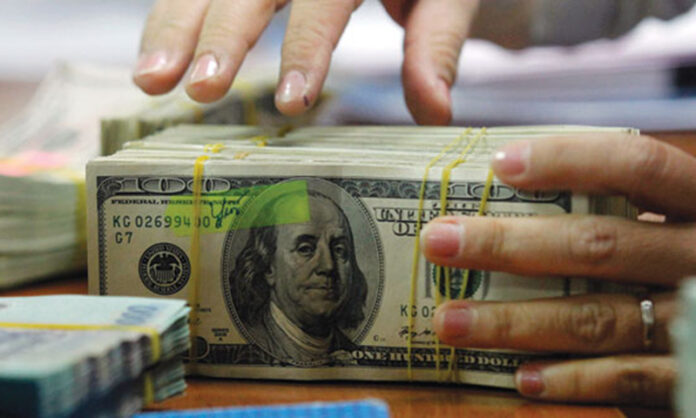KARACHI: The State Bank of Pakistan (SBP) reserves clocked in at $6.1 billion, the lowest they’ve been since April 2014; after plummeting $584 million this week.
“During the week ended on 16-Dec-2022, SBP’s reserves decreased by US$ 584 million to US$ 6,116.2 million due to external debt repayment,” said the SBP.
S&P Global Ratings credit score for Pakistan was brought down a notch from B- to CCC+ due to the deteriorating fiscal and economic outlook for the nation.
“Pakistan’s already low foreign exchange reserves will remain under pressure throughout 2023, barring a material decline in oil prices or a step-up in foreign assistance,” S&P analysts Andrew Wood and YeeFarn Phua wrote.
“We expect political uncertainty to remain elevated over the coming quarters, with continued pressure from the opposition to hold early elections,” added the S&P analysts.
While the S&P upgraded Pakistan’s outlook from negative to stable; the cash strapped country has not had the best time with rating agencies lately. Fitch Ratings and Moody’s Investors Service already rank the nation’s US$7.8 billion in foreign bonds at seven notches below investment grade, the equivalent of S&P’s CCC+ rating.
Can we use all the reserves?
It is important to note that not all that is in the reserves can be used by the government. The reserves include capital raised through Naya Pakistan Certificates, Treasury bills, and Pakistan Investment Bond Holdings. These are encumbered reserves.
An encumbrance is a restriction placed on the use of funds. The concept is most commonly used in governmental accounting, where encumbrances are used to ensure that there will be sufficient cash available to pay for specific obligations such as loan interest or certificate face value upon redemption/ repatriation.
Contrary to popular belief, reserve support from friendly countries is not included in this amount.
“State Bank of Pakistan would like to clarify that SBP liquid foreign reserves, as published on SBP website, do not include any encumbered assets; and accordingly 100% of the SBP Reserves are fully usable for all purposes,” explained the SBP in response to a query.
Moreover, the reserve position is significantly more serious owing to the import cover falling. The import cover for the country stands at a meager 1.16 months signifying liquidity and foreign exchange crunch.
Why is a low import cover alarming?
Foreign exchange reserves are assets held on reserve by the SBP in foreign currencies. These reserves are used to back liabilities and influence monetary policy. They include any foreign money held by the SBP. These may include foreign currencies, bonds, treasury bills, and other government securities.
Economists suggest that it’s best to hold foreign exchange reserves in a currency that is not directly connected to the country’s own currency. Most of these reserves are held in the U.S. dollar since it is the most traded currency in the world.
A general measure to know whether the reserves are adequate enough or not is to look at the import cover. Countries should hold reserves covering 100 percent of short-term debt or the equivalent of 3 months worth of imports.
Import cover is the number of months of imports that could be covered by a country’s international reserves. Import cover is an important indicator of the stability of a currency.
Some crises result from the withdrawal of foreign capital, while others involve the loss of export income or capital flight by domestic residents. These risks should also be taken into account when ascertaining the level of reserves.
For countries where there are drains in the balance of payments because of terms of trade shocks, volatile aid, foreign direct investment, and remittance inflows and outflows, the import cover remains a useful tool.
As per a study by the IMF, three months of imports remains broadly appropriate for countries with flexible exchange rates, given the estimated benefits provided by reserves in reducing both the probability and impact of shocks. The analysis also suggests that countries with good institutions and policies need lower levels of reserves.





I like it
Pakistan in a severe liquidity crunch. Currency/economy could go in tailspin barring a miracle or complete surrender to IMF
Yes Pakistan is completely surrendered in front of IMF. how people will survive
Despite IMF loans, Pakistani rupee continues to fall